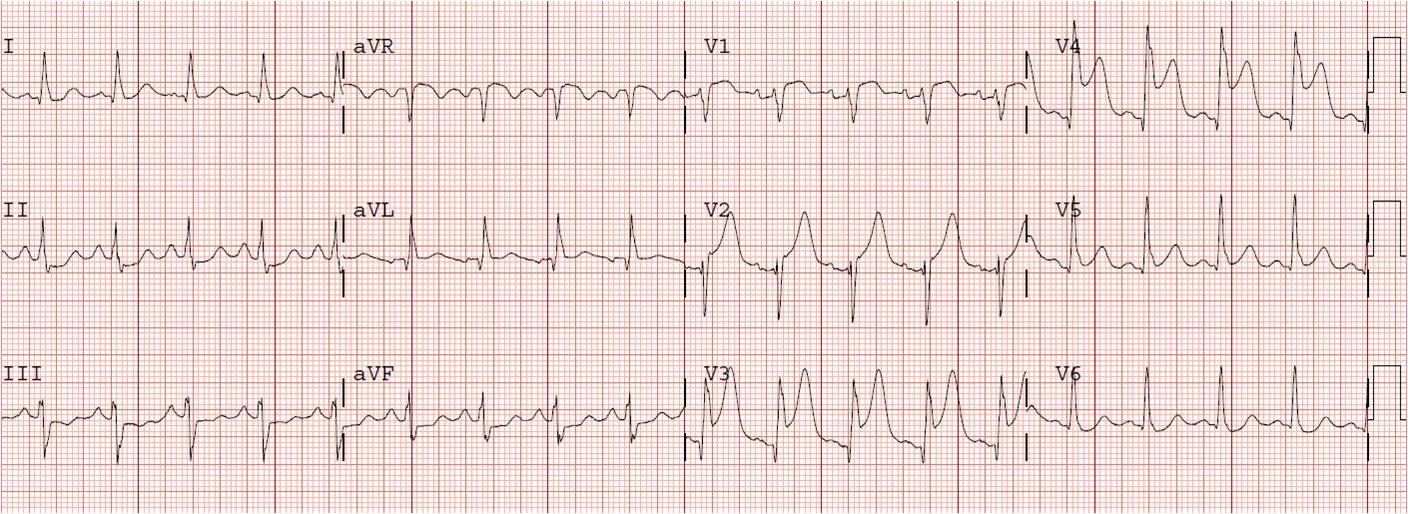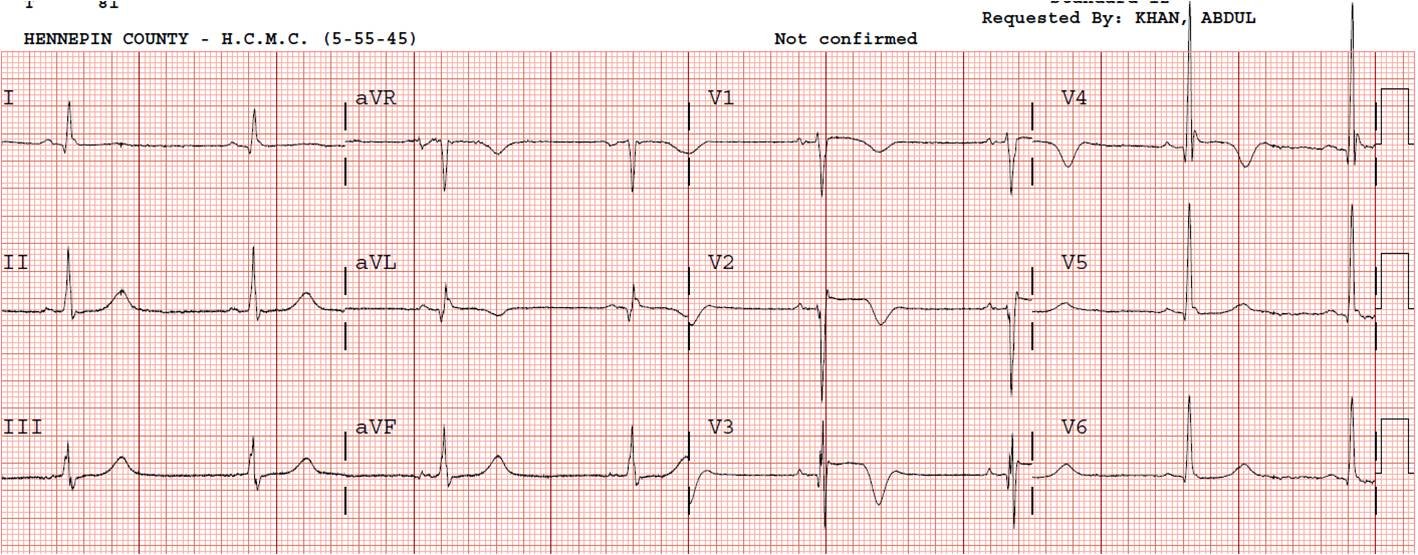This series of ECGs from a patient with LAD occlusion shows hyperacute T waves in precordial leads, as well as ST elevation in V1-V3 and aVL. The second ECG was 16 minutes after the first and shows markedly increased ST elevation. The patient was taken for rapid PCI. The third ECG is post-reperfusion.







Is the continued STE and TWI post-cath just indicative of the permanent myocardial infarction?
The ST elevation usually resolves eventually. However, any persistent ST elevation is consistent with more myocardial (permanent) injury, worse outcome, more CHF, etc. If it never completely resolves, 80% of these will have an LV aneurysm (especially if there is complete loss of R-wave, called a QS-wave).
Is it bad that the first ECG on its own (without a clinical picture attached to it) screams to me "Hyperkalmeia"? I'm still trying to get comfortable with differentiating hyperkalemic T-waves vs. Ischemic T-waves.
It is sometimes difficult to differentiate hyperK from hyperacute T's. In short, the T-wave in hyperK is "tented" or "pointed", and it looks this way in part because the preceding ST segment is very upwardly concave. That said, there is a lot of variation, and the best way to diffferentiat is to use the laboratory!!
Here are some other posts that may help:
http://hqmeded-ecg.blogspot.com/search?q=hyperkalemia
Sir, 1st ECG indicates " Proxima LAD Occlusion" – STD in Inferior leads with subtle STR in aVR. Your comment
And STE in aVL. Agree